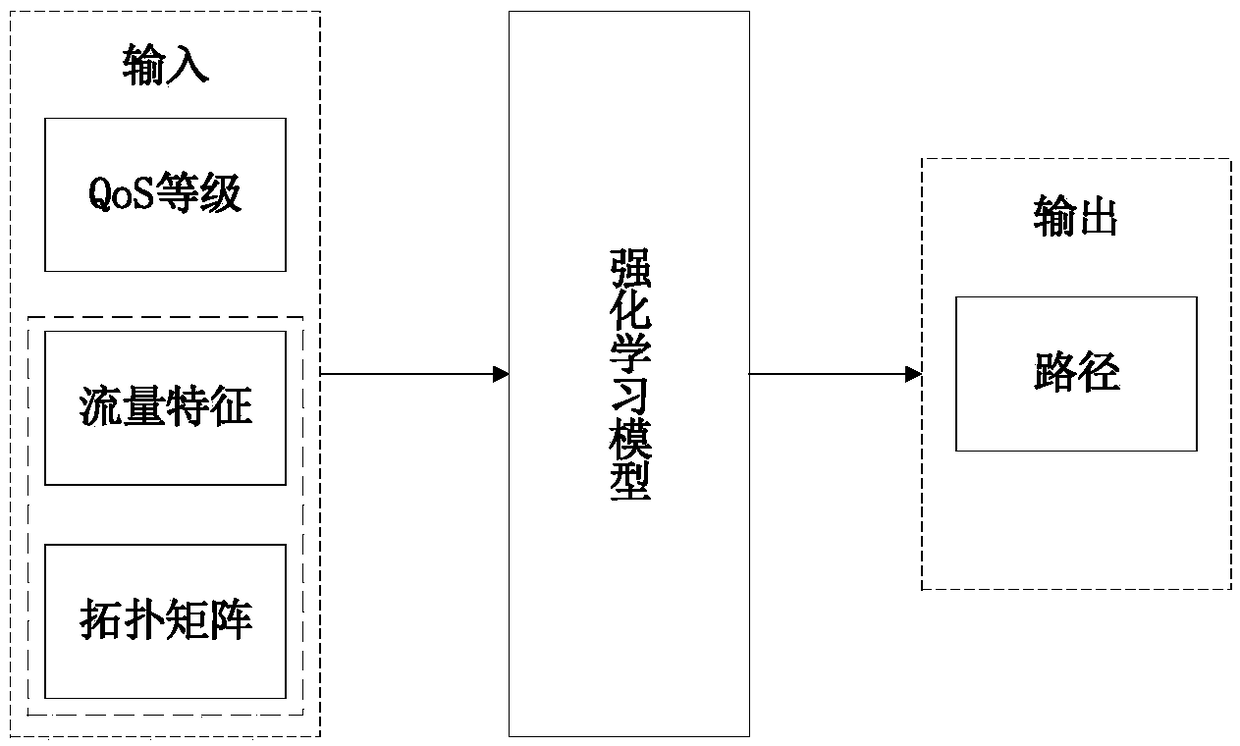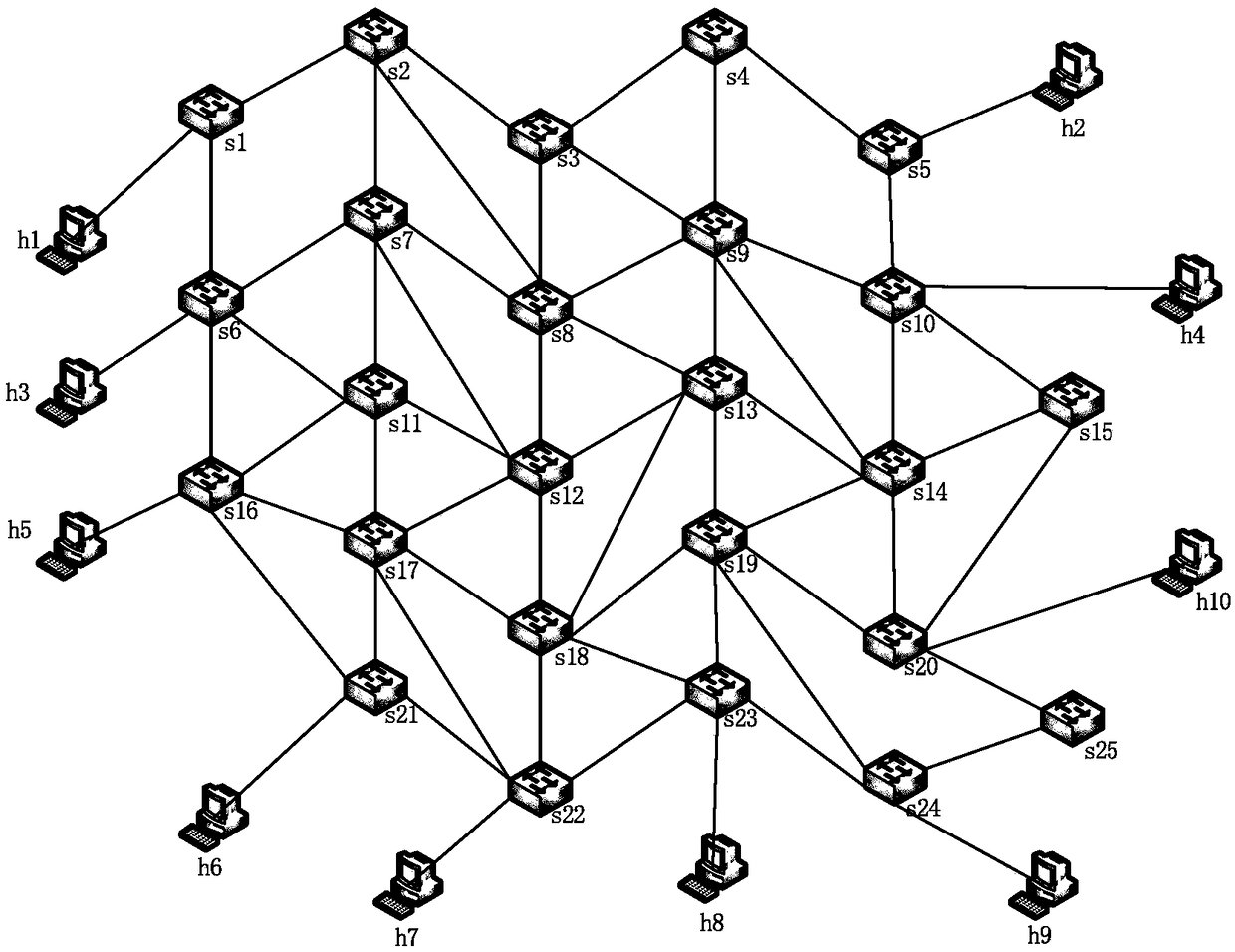SDN route planning method based on reinforcement learning
A technology of reinforcement learning and learning algorithm, applied in the field of network communication technology and reinforcement learning, it can solve the problems of reducing link utilization, network congestion, and lack of consideration, and achieve the effect of reducing network congestion and high link utilization.
- Summary
- Abstract
- Description
- Claims
- Application Information
AI Technical Summary
Problems solved by technology
Method used
Image
Examples
Embodiment
[0040] The pseudo code of the specific routing algorithm is described as follows:
[0041]
[0042]
[0043] The present invention will be further described below in conjunction with embodiment.
[0044] The shortest path planning method involved in the present invention can specifically be described as follows:
[0045] In an SDN network with 25 OpenFlow switches and 10 hosts, the SDN network topology is shown in Figure 2, and its topology relationship can be described by a 25×25 matrix. The topology matrix T is as follows, if the two switches are connected, it is set to 0, and if they are not connected, it is set to -1. For example: T[0][0]=-1 means that the switch s1 is not connected to s1, and T[0][1]=0 means that the switch s1 is connected to s2. Define the state set S={s1,s2,s3,...,s24,s25}, the action set of each state s∈S A(s)={x|T[s][x]≠-1}
[0046]
[0047] One of the hosts wants to send a message to another node, the sender is the starting point, and the...
PUM
 Login to View More
Login to View More Abstract
Description
Claims
Application Information
 Login to View More
Login to View More - R&D
- Intellectual Property
- Life Sciences
- Materials
- Tech Scout
- Unparalleled Data Quality
- Higher Quality Content
- 60% Fewer Hallucinations
Browse by: Latest US Patents, China's latest patents, Technical Efficacy Thesaurus, Application Domain, Technology Topic, Popular Technical Reports.
© 2025 PatSnap. All rights reserved.Legal|Privacy policy|Modern Slavery Act Transparency Statement|Sitemap|About US| Contact US: help@patsnap.com



